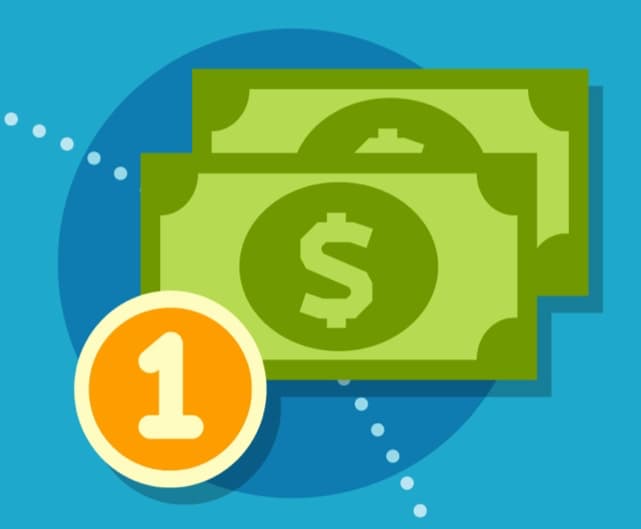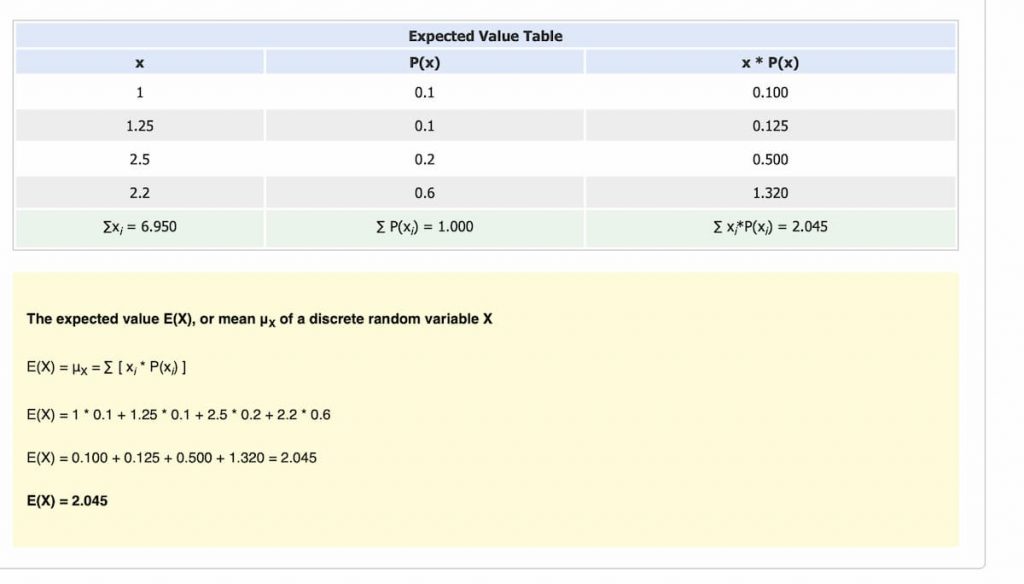How much is an American Airline mile worth? What about a Chase Ultimate Reward Point? In this article we’ll layout a simple process for how to value points and miles. Specifically, on how to value points and miles based on your unique travel habits.
Travel blogs might value a Citi ThankYou Point between 1.6-1.7 cents a point. But how much is a Citi Thankyou point worth to you? In this article we share four simple steps on how to value a point or mile. Without further ado. Here we go:
Step 1 – Create a List of Ways in Which You Will Potentially Use the Points
Step 2 – Determine a Percentage/Probability for Each Potential Use
Step 3 – Assign a Per-Point Value Based on Each Potential Use
Step 4 – Run an Expected Value Calculation
To make this practical, we’ll walk through these four steps with a goal of assigning a potential value to a Chase Ultimate Reward Point.
Step 1 – Create a List of Ways in Which You Will Potentially Use the Points
The first step on how to value points and miles is to think through potential uses for the points. Will you redeem them for first class flights? Will you book hotels? Will you redeem for cash? It’s not necessary to include any and all possible uses, just create a list which reflects your potential range of redemptions.

To help create the list, look back at past travel patterns, factor in upcoming travel plans, consider your own personal priorities and needs.
Your list might include “Redeem for hotel stays” or maybe something more specific like, “Redeem for Park Hyatt Hotels”. There’s no right or wrong way to create a list of potential uses, it’s based on your best guess of how you personally expect to redeem the points.
For our example, we’ll list six potential uses for Ultimate Reward points.
- Redeem for cash
- Purchase travel through the Chase travel portal
- Redeem for premium cabin airfare
- Redeem for standard airfare
- Redeem for high end hotels
- Redeem for standard hotels
Are these all possible uses for Ultimate Reward Points? No, but these six potential uses will show how the math works. Think of them as placeholders, each person can add or subtract or replace this list to reflect their potential redemptions.
Once you a create list of potential uses, enter it into column A in the spreadsheet below.
The Spreadsheet– We’ll use a simple spreadsheet for calculating the personal value for a point or miles. Once you a create list of potential uses, enter it into column A in the spreadsheet below.
| Potential Use | Probability/ Percentage of Use | Value Per Point (cents) | Subtotal |
| 1. Redeem for cash | |||
| 2. Purchase travel through the Chase travel portal | |||
| 3. Redeem for premium cabin airfare | |||
| 4. Redeem for standard airfare | |||
| 5. Redeem for high end hotels | |||
| 6. Redeem for standard hotels | |||
| 7. Total |
Step 2 – Determine a Percentage/Probability for Each Potential Use
Once we’ve created your list of potential redemptions, the next step is to review each individual use and ask the question, “How often will I use my points in this manner?” There are no right or wrong answers. Pick a percentage based on your expected redemptions. Do you normally redeem for flights? If so, do you fly economy or premium cabin? Do you redeem points for hotels? Do you use the Chase travel portal? Go line by line through your list of proposed uses and determine what percentage of the time you’ll redeem for specific purpose. Make sure all the percentages add up to 100%.
For the sake of this exercise, we’ll assign the following percentages for each potential use.
| Potential Use | Probability/ Percentage of Use | Value Per Point (cents) | Subtotal |
| 1. Redeem for cash | 10% | ||
| 2. Purchase travel through the Chase travel portal | 10% | ||
| 3. Redeem for premium cabin airfare | 20% | ||
| 4. Redeem for standard airfare | 0% | ||
| 5. Redeem for high end hotels | 60% | ||
| 6. Redeem for standard hotels | 0% | ||
| 7. Total | 100% |
Step 3 – Assign a Per Point Value for Each Potential Use
Once we’ve assigned percentages, the next step on how value points and miles to go line by line to assign a per-point value for each potential use. In some cases coming up with a number may be easy, in other cases, more difficult.

Set Values – Some of the redemption values are already determined by Chase. For example, Ultimate Reward Points can be redeemed for cash at 1 cent per point. Ultimate Reward Points can be used to purchase travel through the Chase travel portal at 1.25 cents per point when paired with the Chase Sapphire Preferred, or 1.5 cents a point when paired with the Chase Sapphire Reserve. If these are your potential uses, you can plug these predetermined values directly into the spreadsheet.
How do I determine a value when there’s not one right answer?
One of our potential uses is “redeem for standard airfare”. How much is a point worth when redeemed to fly in economy class from LAX to Chicago? There is not one “right” answer, but here are a couple ways to arrive at a number.
- “Sticker Price” Divided by Number of Points Redeemed
- “What I Would Pay in Cash” Divided by the Number of Points Redeemed
Method 1 – “Sticker Price” Divided by Number of Points Redeemed
One way to arrive at a per-point value is to take a travel expense, find out how much the expense would be if you paid cash. Then take the cash price and divide it by the number of points necessary if you were to pay for it via a points redemption.

Flight Example – If a domestic round-trip flight averages 25,000 points per round trip, and the cash price for the ticket is $300, I can divide the cash price by the required points. Three hundred dollars divided by 25,000 points yields a value of 1.20 cents per point.

Hotel Example – If the cash price for a hotel room is $200, and the cost in terms of points is 12,000 points, I’m getting 1.66 cents per point of value.
Method 2 – “What I Would Pay in Cash” Divided by the Number of Points Redeemed
Is “Sticker Price” Divided by Points Redeemed the best metric? Sometimes, but I recently flew a one-way from LAX to Dubai in Emirates Business Class. The cash price for this one-way flight runs about $5000. I didn’t pay cash, I booked the flight with 82,500 Alaska Miles. Using the “Sticker Price” divided by points redeemed the math would be as follows – $5,000 divided by 82,500 miles = 6.06 cents a point. That’s great value for a point redemption!

But in what way did I get six cents of value? In this way, had I paid cash, it would have cost me $5,000. But, would I have paid cash for that same ticket? No, so how much “value” was I really getting from my Alaska miles?
Maybe I could look at as follows. If the cash price for a one-way business class flight is $5,000, but the most I would pay in cash for that same flight is $2,000, then it might be more accurate to use $2,000 for my calculations. Two thousand dollars divided by 82,500 points is 2.42 cents a point in value.
I’ll leave it up to the reader to decide the best way to determine how to value their points. But, however you make your determination, once you settle on a value, plug it into the spreadsheet.
For our example, I’ll assign placeholder values for each of the potential uses. You can swap out my numbers with your own personally derived values.
| Potential Use | Probability/ Percentage of Use | Value Per Point (cents) | Subtotal |
| 1. Redeem for cash | 10% | 1 | |
| 2. Purchase travel through the Chase travel portal | 10% | 1.25 | |
| 3. Redeem for premium cabin airfare | 20% | 2.5 | |
| 4. Redeem for standard airfare | 0% | 1.33 | |
| 5. Redeem for high end hotels | 60% | 2.20 | |
| 6. Redeem for standard hotels | 0% | 1.25 | |
| 7. Total | 100% |
Step 4 – Run an Expected Value Calculation
The last step is on how to value points and miles is to run a calculation. Make sure all the percentages total 100%. Then, for each row, multiply column B by column C and enter the result in Column D. Once this is done, total all the values in column D, and place the result at the bottom of Column D. The result is your personal value for Chase Ultimate Reward Points. In our hypothetical exercise, we end up valuing Chase Ultimate Rewards at 2.045 cents a piece. Are Chase Ultimate Reward Points worth 2.045 cents a piece? Who knows, but if the values in this spreadsheet reflect the uses of the person who filled it out, and the value that person places on the uses, then for that person, they are worth 2.045 cents a piece.
| Potential Use | Probability/ Percentage of Use | Value Per Point (cents) | Subtotal |
| 1. Redeem for cash | 10% | 1 | .100 |
| 2. Purchase travel through the Chase travel portal | 10% | 1.25 | .125 |
| 3. Redeem for premium cabin airfare | 20% | 2.5 | .500 |
| 4. Redeem for standard airfare | 0% | 1.33 | 0 |
| 5. Redeem for high end hotels | 60% | 2.20 | 1.32 |
| 6. Redeem for standard hotels | 0% | 1.25 | 0 |
| 7. Total | 100% | 2.045 |
Our goal is to demonstrate a process for determining the value of a point or mile. You may come up with a completely different set of uses, you may also come up with a completely different set of value-per-point. We encourage each person to make the spreadsheet helpful for their unique uses.
In Conclusion
The topic of this article is – “How to Value Points and Miles”. We presented a simple, four-step process to establish a personal value for points and miles.
Step 1 – Create a List of Ways in Which You Will Potentially Use the Points
Step 2 – Determine a Percentage/Probability for Each Potential Use
Step 3 – Assign a Per-Point Value Based on Each Potential Use
Step 4 – Run an Expected Value Calculation
How About You?
- Have you thought through a way to value various points and miles?
- What criteria do you use?
- What would you add to the method we shared?
- Over time, have you changed how you value a particular points currency?
Appendix 1
Part of the storyline for the movie Inception was a dream within a dream. In this exercise you can do a calculation within a calculation. For example, potential use #4 is “Redeem for standard airfare”. The user needs to determine a per-point value to enter in row #4, column C.
One way to determine this per-point value is to replicate the exercise in a “feeder” spreadsheet. Meaning, the user can create a second spreadsheet for the narrowly defined purpose of coming up with a value for “Redeem for standard airfare”. They would….
- Come up with six (or whatever number) potential uses of redeeming for standard airfare and
- Determine a Percentage/Probability for Each Potential Use
- Assign a Per-Point Value Based on Each Potential Use
- Run an Expected Value Calculation
After doing the math, the user could take the final value at the bottom of Column D for the “Redeem for Standard Airfare” spreadsheet, and enter it in Line 4, Column C, of the larger “Valuing Chase Ultimate Reward Points” spreadsheet. This process could be replicated to establish other values along the way.
Appendix 2
The spreadsheet in this exercises accomplishes the goal of an expected value calculation. But for those of you interested in more math. Here’s the details:





